
Activity Reports
To overcome the harsh winter – the “Kizuna Newspaper”
December 18, 2011
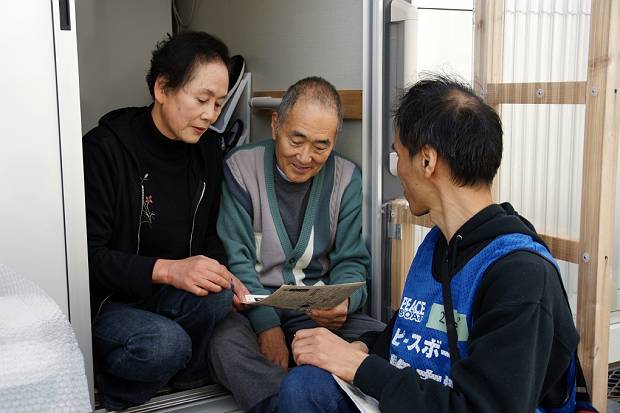
The major difference between the Kizuna Newspaper, distributed throughout temporary housing in and around Ishinomaki, and other Peace Boat relief activities, is that the newspaper did not start upon request. Cleaning, provision of meals and support for fisheries all started as a result of requests from residents through the Social Welfare Council, the Ishinomaki Disaster Recovery Assistance Council, or directly.
However, publishing and delivering the newspaper did not start based on any visible needs. It was launched based upon the experience 1995 after the Great Hanshin Earthquake, and challenges arising because of the lack of access for people in temporary housing to the internet and information.
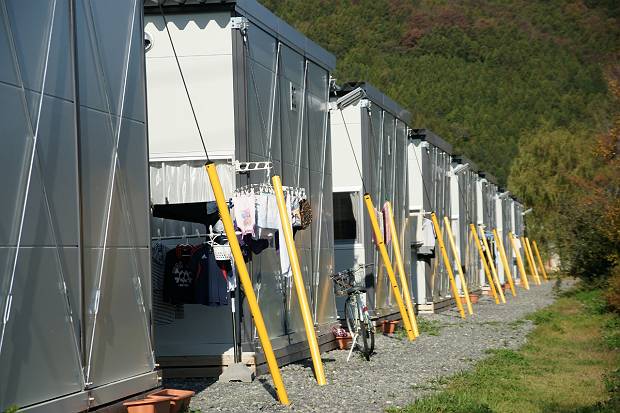
On October 11, all evacuation centres were closed in Ishinomaki city, and with some exceptions, many of those who were affected begun their new life in temporary housing. There are a total of 7,297 temporary housing units built in Ishinomaki City, amongst which 6,693 units house people who lost their homes in the earthquake and tsunami (according to the Ishinomaki City figures as at December 01, 2011.)
When assistance for survivors shifts from the emergency period to the reconstruction period, it marks the new stage of relief – the life-rebuilding stage.
However, it takes a lot to overcome the changes in location, neighborhood and housing, and to recreate new neighborhood relationships and a new community itself.
People accumulate such precious assets, including a community, while they live in a society. Natural disasters take all of these away, and as a result of this many people actually passed away in isolation (“kodokushi”) after the Great Hanshin Earthquake.
Prevent “kodokushi” (isolated death). That may be a rather bold goal. Still, the newspaper was started with the hope to provide even some small pieces of cheering news to those who live in temporary housing.
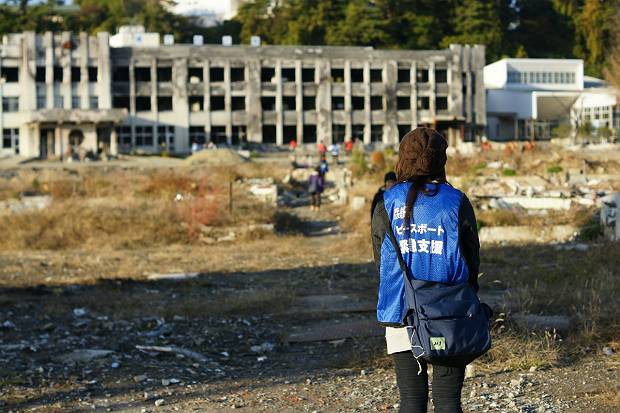
Part of a lecture for volunteers before visiting the temporary housing. At Kadowaki district, learning about the damage caused by the tsunami and letting volunteers think about what they can do.
“Not being affected by disaster myself, is there anything I can do as a volunteer?” Many new volunteers have this kind of feeling, and support staff members can often feel the same way. On the first day of volunteering, those joining the members to support residents in temporary housing face this doubt with help from current and previous members.
“Cheer them up with your best smile,” is the most important thing volunteers can do.
Still, not being used to the area and the temporary housing in the disaster-affected regions is difficult. It causes much mental stress to visit strangers in special circumstances, even for those with considerate life experience. “I want to be of use”, is what all volunteers feel, which may be why they can feel tense at first. On the first or the second day, volunteers often even say “to be honest, I hope that no one is at home”.
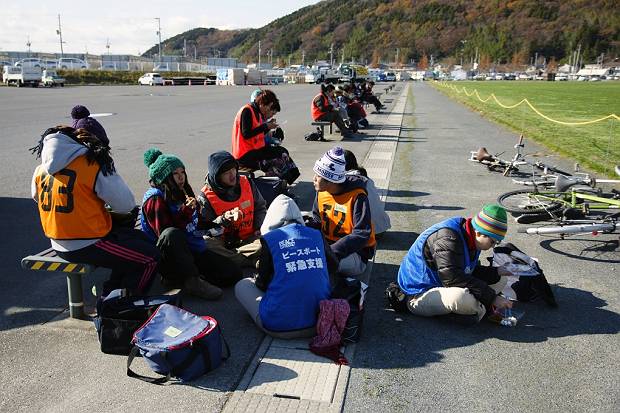
During the newspaper delivery, volunteer members take a break for lunch in a park. As it was a windy day, they lay their bicycles down to prevent them from being blown down. (Photo: November 24)
At first, volunteers wonder what to talk about, or worry about saying something wrong and hurting people’s feelings. However, by the 4th or 5th day, their feelings change to “I want to talk, please come out.”
The volunteers do not need to say anything more than greetings.
“Good morning! I’m from Peace Boat. I brought you a newspaper!”
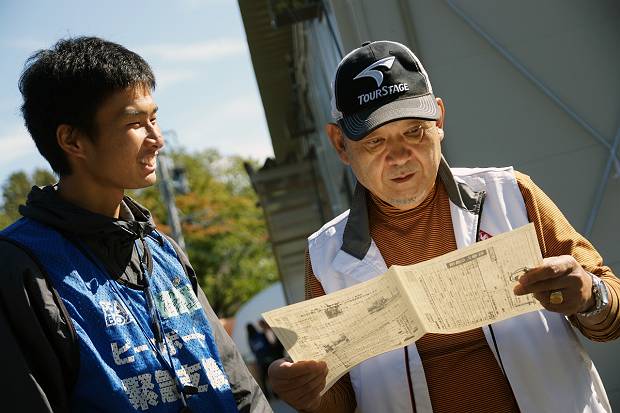
“It’s nice out today. Don’t you feel warmer than yesterday.”
“Hi Sir, has anyone told you you look like someone on television?”
No matter how the conversations begin, they may lead to the truth that the residents really wanted to talk about.
For example, the inconvenience of commuting to hospital, insomnia they have from anxiety or loneliness, domestic violence and other problems, dependence on alcohol and so on. Volunteers of course cannot solve these problems themselves. However, through Peace Boat they can report the residents’ voices to the local government and the Social Welfare Council. The residents may feel at ease to talk because they are “volunteers” and not “officials”.
Temporary housing support members usually carry only newspapers. They do have pen and memo pad just in case, but usually don’t take them out just when talking to people.
The residents have been the target of many interviews by journalists and of research by the government since the disaster, and some have had negative experiences from having to recollect the horrific experience. So, some of them feel uncomfortable talking to strangers.
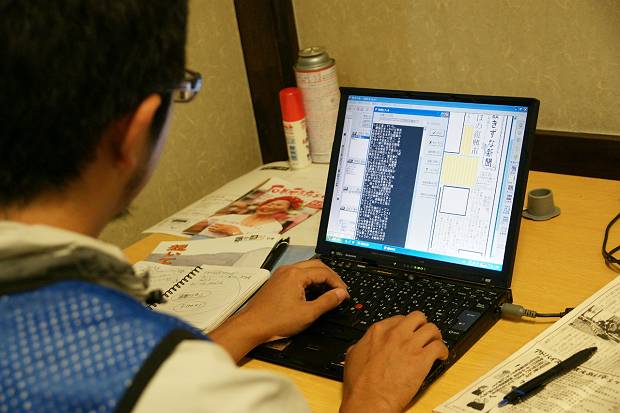
A volunteer writing an article for the “Kizuna Newspaper”
Yet, since the newspaper was launched in October, it has received many compliments, with residents giving thanks for the deliveries, and expressing that they look forward to talking with the volunteers. These compliments come as a result of all the efforts made by Peace Boat volunteers, symbolized by the Peace Boat blue bibs, including efforts in meal provision, cleaning and assistance in evacuation centres in Ishinomaki.
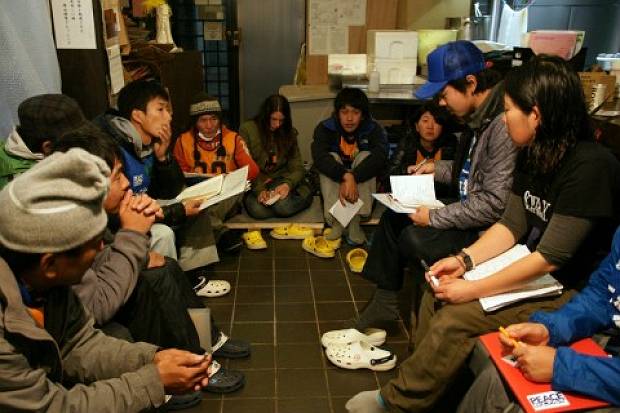
At night, staff members discuss the next day's plans by sharing reports of that day among volunteers.
Since March, the activities of each and every volunteer who has come to Ishinomaki has contributed to building trust between the residents and Peace Boat.
It’s been 9 months since the disaster. Ishinomaki is now approaching a milestone, as the unemployment insurance for those who lost their jobs after the disaster will come to an end, after having once been extended for three months. It is clear that they will be anxious losing their only income. Peace Boat pledges to continue to collaborate with other organizations, and develop programs including job support. Relief organisations must consider these issues from the perspective of the disaster-affected community, approaching spring of next year.
The main reason to volunteer, of course, is the fact that there are people there waiting for us.
TAGS: Disaster Relief • Ishinomaki • Kanto-Tohoku Earthquake and Tsunami • Kizuna • kodokushi • newspaper • Peace Boat • peaceboat • Relief • temporary housing • Tsunami • Volunteer • volunteering • Volunteers


